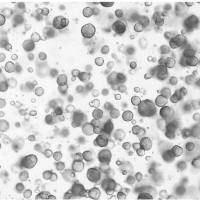Cryopreservation of Human Gametes
互联网
542
Spermatozoa were the first mammalian cells to be successfully cryopreserved (1 ), and the techniques developed by Sherman (2 ) enabled centers to begin to establish sperm banks for men at risk of losing their fertility as a result of clinical treatments for illness. Banks of cryopreserved donor sperm have become an integral part of assisted reproduction procedures, allowing the treatment of couples with male factor infertility by ensuring that samples are available when required while conferring anonymity. However, more recently it has become essential that human cells for donation are quarantined to reduce the risks of contamination, and semen is required to be stored for several months to ensure the requisite tests for HIV are performed. Although pregnancies from both in vitro fertilization (IVF) and intrauterine insemination (IUI) are common, cryopreservation causes cell lysis, a reduction in motility, an increase in the number of cells undergoing spontaneous acrosome reaction, an alteration in the distribution of acrosin (3 , 4 ), and an overall decrease in fertility (5 ). Sublethal cryodamage is apparent in postthaw analysis of donor sperm. Spermatozoa may be initially intact and motile, however, viability postthaw is lost rapidly over time. This may be a result of cold shock damage, although it appears that human sperm are less susceptible than many mammalian species, possibly as a result of the high sterol content of the membrane, since high cholesterol levels stabilize membranes during cooling (6 ).








